Loose or tight? How to check muscle tension?
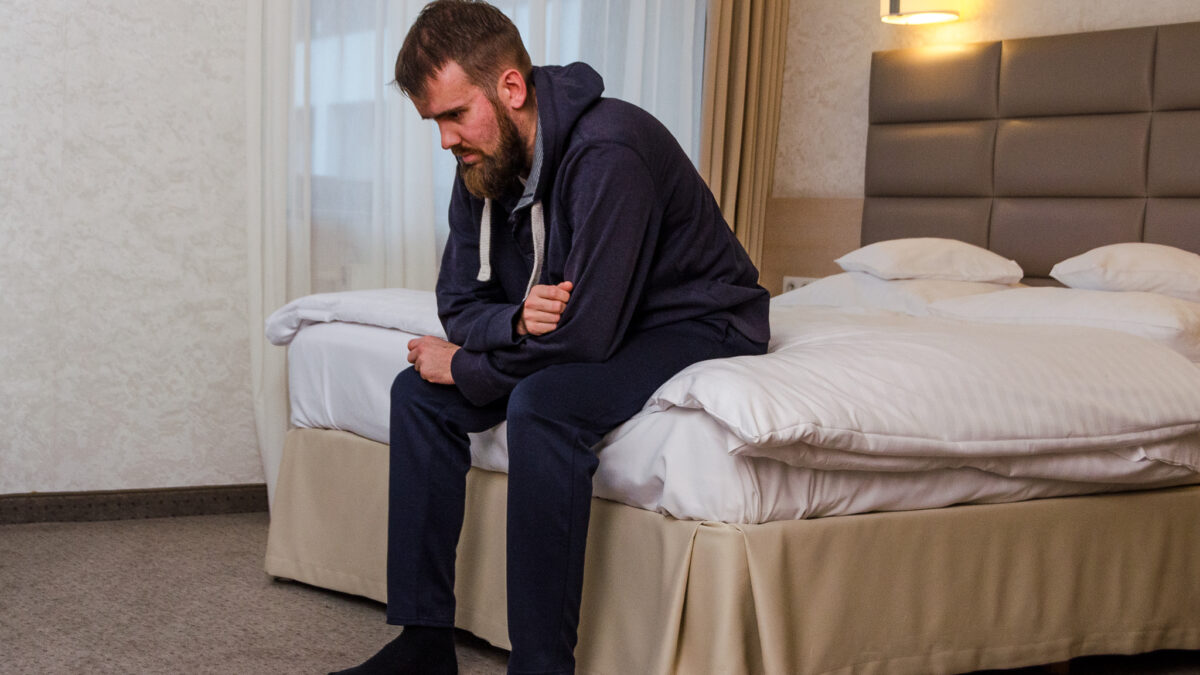
How to check muscle tension
Is every laid-back person a relaxed person? Is every seasoned Is an athlete a tense person? Or maybe a strongly built person can be more relaxed than those who are less muscular? In fact, what a person is is a mystery. And since we like to solve them in various professional ways, we will try to explain today’s issue to you what this tension and looseness actually looks like.
When are we loose?
A relaxed human posture means the most free in its essence, where we do not use the potential of the muscles beyond their ordinary value. To put it simply, in human terms, we deal with such a character when we are at rest, most often when lying down. We could also add a sitting position, although this requires some work of individual deep muscles. However, the closer the back or leg support is to a given piece of furniture, the more these muscles can rest because they do not have to keep the body in a balanced position on their own. We feel particularly relaxed on a properly profiled armchair and sofa in terms of softness and the material it is made of. We pay close attention to this, because not every soft upholstery brings relief to our figure. A bed that is too soft may worsen the posture defects that you are trying to overcome, e.g. cervical or lumbar lordosis, and a chair that is too soft will not help you break the habit of a hunched back. Therefore, it is worth ensuring that the upholstery of the armchair, sofa and bed is properly hardened so that our body can relax as much as possible after all the exertions.
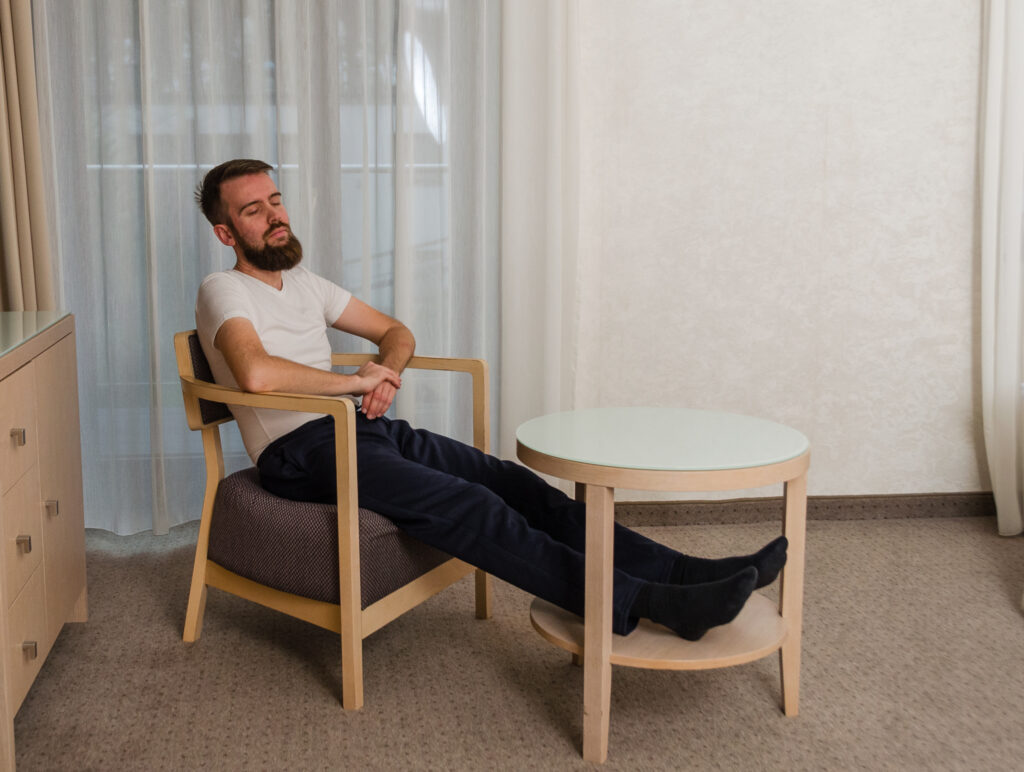
And is a muscular man destined only for tension? If someone thinks so, let them be carried away by our arguments that lead us to this error. Physical activity, of course, increases muscle strength and generates various portions of adrenaline – but on the other hand, it also causes greater flexibility of muscles and joints in the range of movements, which means better relaxation of your figure in the long run. This may give them an advantage over less athletic people who sit more at desks with computers or drive cars. Their repetitive activities and monotonous positions inhibit the body’s potential, which would be needed for more efficient functioning, e.g. in the garden, warehouse or for practicing sports such as running.
When are we tense?
Excessive physical activity constantly contributes to increased tension throughout the body, even when resting. This usually happens when we undertake any activities too suddenly. A sudden swing of the arm or leg, sudden rotation of the torso or head, as well as rapid stimulation of muscle strength – these processes most often result in stiffening the body. The basic symptoms of stiffness are pain in places with limited range of motion, where joints and muscles have been overloaded. We can get into such a situation even without any effort, simply by sitting or lying still for a long time. Then, some of the muscles go to sleep and the sudden movement of the body to a different position makes the body, not yet warmed up and not ready for any activity, more susceptible to even the slightest movement disorders. An additional factor that has an unfavorable prognosis for this condition is stress and various nervous or even anxiety symptoms associated with it. They most often accumulate around the arms, and in extreme cases, they can also cause a feeling of internal paralysis in more parts of the body.
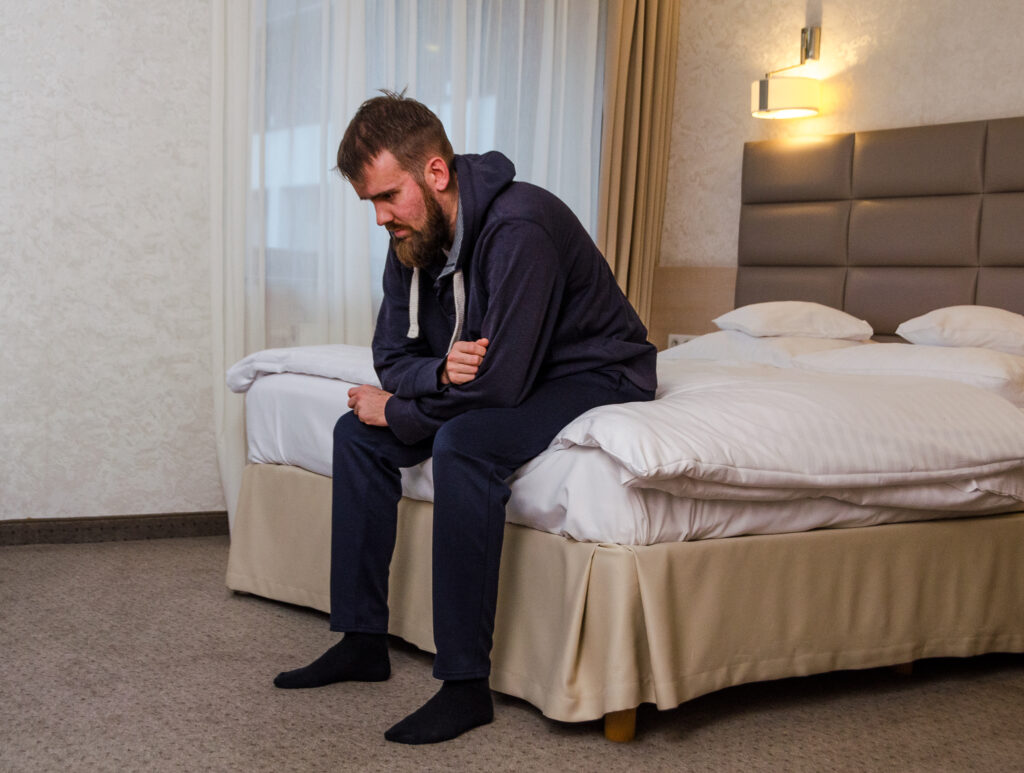
Therefore, the basis is to respect your own body – in the mental sense, so that it can rest from the efforts and intensified emotions; as well as in the physical sense, so that after a moment of relaxation, a person slowly causes movement in his body. Let the appropriate body parts prepare freely for any activity, e.g. by simply warming up. This happens on the same principle as the day-to-day transition from warm to cold days, when our body, accustomed to higher air temperatures, does not have time to adapt to the different functioning conditions and, as a result, the body more easily loses its immunity as a result of colds.
The tips on gradually stimulating the body to be active apply not only to people with a sedentary lifestyle but also to more athletic people. It should also be remembered that muscle stimulation after a long break from regular sports training may require more time. The existing muscles lose their physical memory developed at an earlier stage and will need systematic exercises again to restore their proper parameters.
Am I loose or tight? How to check?
At first glance, we do not always notice the distinctive features of our figure that determine the characteristics of our muscles. Only closer diagnostics will reveal deeper secrets about their voltage ranges. It is worth paying attention to possible cases of hypertonia, which may be more visible due to some symptoms already during the initial imaging examination. Such signs include asymmetrical body tension, a C-shaped body position, or more frequent clenching of the fists. Any restriction of movement, e.g. of the head, shoulder and hip joints in different directions, makes individual muscle groups stiff. This results, as mentioned above, from insufficient warming up or even overloading. To prevent this situation, selecting the right exercises is not enough – it is worth first diagnosing the sources of muscle tension. How can we do this? From the point of view of a masseur, the most obvious option seems to be palpation of muscles in terms of their hardness and range of motion, during which we can detect any irregularities compared to potential standards.
Let’s imagine a situation in which we have a patient with a feeling of stiffness in the right shoulder. This interview will give us recommendations that we can give the patient to better visualize the problem – in this case, we will ask him to turn his head left or right, as well as to move his right and left arms forward and backward.
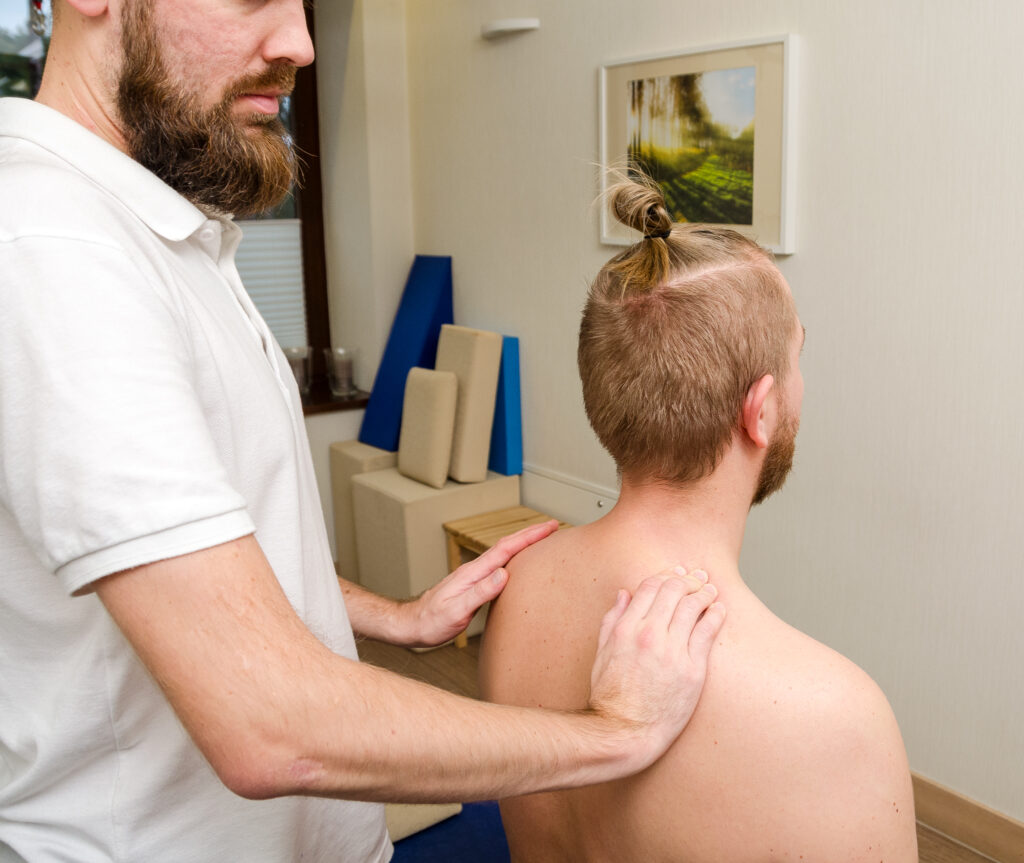


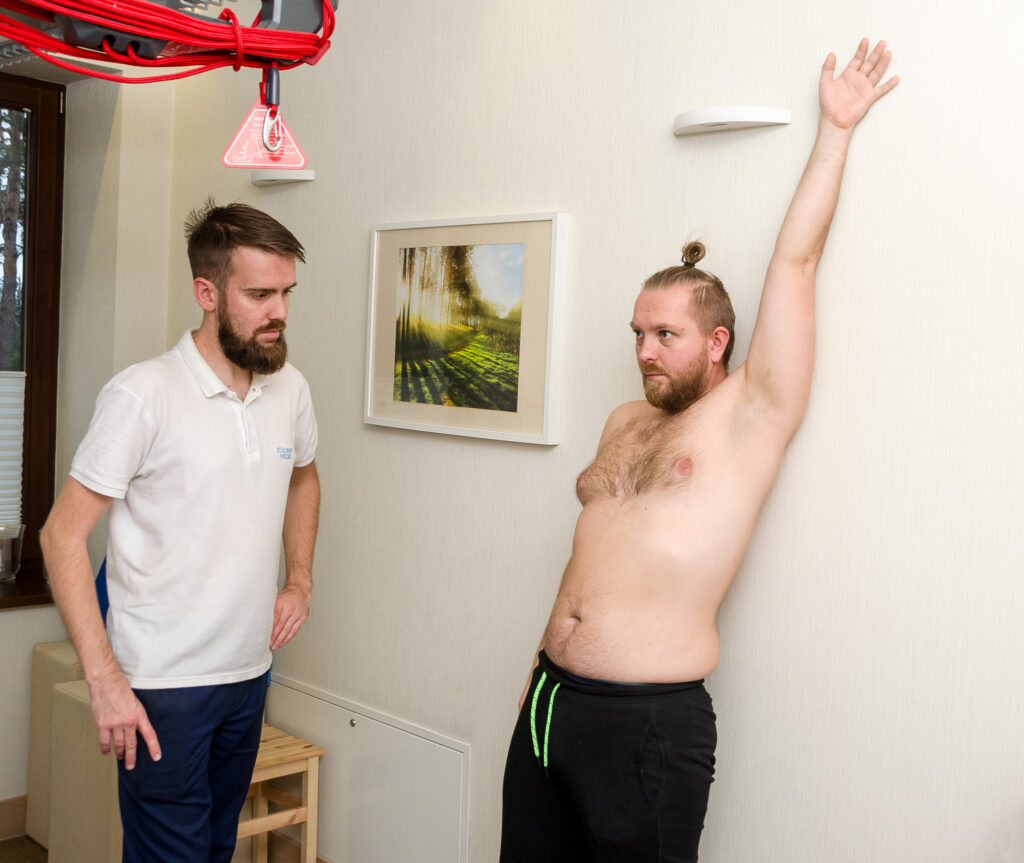
Even though the subject of the case is the right side, we always examine both – because the patient’s subjective feelings need to be verified with the actual situation through the eyes of the therapist, if he or she notices movement restrictions on the other side as well. In further proceedings, the patient’s head and arm movements are resumed under the guidance of one hand of the rehabilitator, whose other hand is intended to test the tension of the relevant muscles by touch, when and how quickly they begin to occur.


In the next step, we use elements of manual therapy, in which we can use our fingertips or fists to feel tender points – i.e. those that cause the greatest pain in the area of the irritated muscle group. However, you should not enter these points too quickly, so as not to discourage the patient and disturb the effectiveness of the procedure. It is worth starting the therapy by massaging the area to prepare it for actions on increasingly deeper tissues. When the body of the examined area reaches the appropriate temperature, only then do we gradually “penetrate” into the muscles, e.g. by using a pincer grip. In this way, the patient gains greater trust in the hands of the rehabilitator and accepts stronger stimuli with less and less resistance.

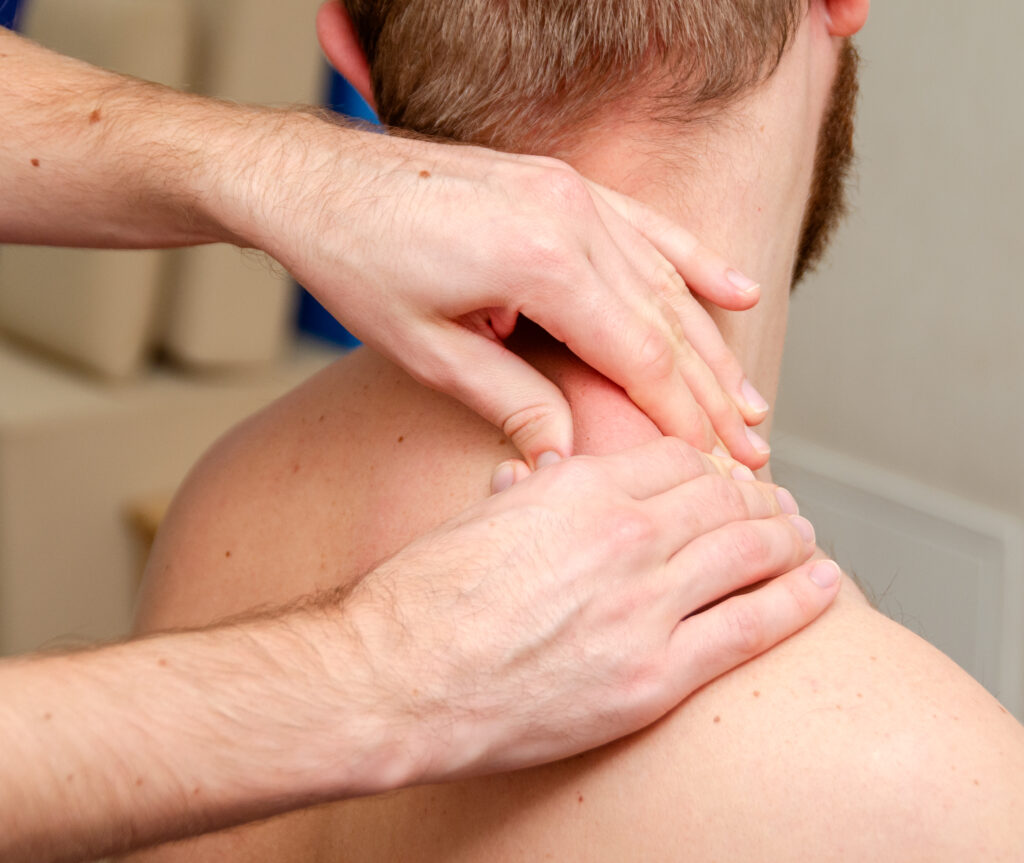
Another solution we recommend for easing excessive muscle tension is ischemic compression of trigger points. It involves long-term pressure with the fingertips, proximal phalanges or fist on the most sensitive point from which the greatest pain in a given muscle group originates. At first glance, this activity does not seem particularly technically complicated, but thanks to it, much more is happening inside the painful area. By compressing, we first create a strong impulse that temporarily increases muscle tension, and by maintaining the grip at the same point for another 90 seconds, the pulsating pain begins to gradually subside.
The key factor of this technique is the appropriate pressure force, and that this action takes place only on the muscles. If we do not look for the desired trigger point very carefully, compression even after the first 30 seconds will not result in a reduction in tension, but will only keep it unchanged. Unintentional pressure on the nerves may even have the opposite effect and worsen the patient’s condition.
__________________
The author of the text is massage technician Piotr Łężak from the team of physiotherapists Medical Column. He specializes in deep tissue massage techniques and myofascial release, and also deals with anti-edematous therapy. Outside of work, he is a railway enthusiast and loves long-distance bicycle trips.
